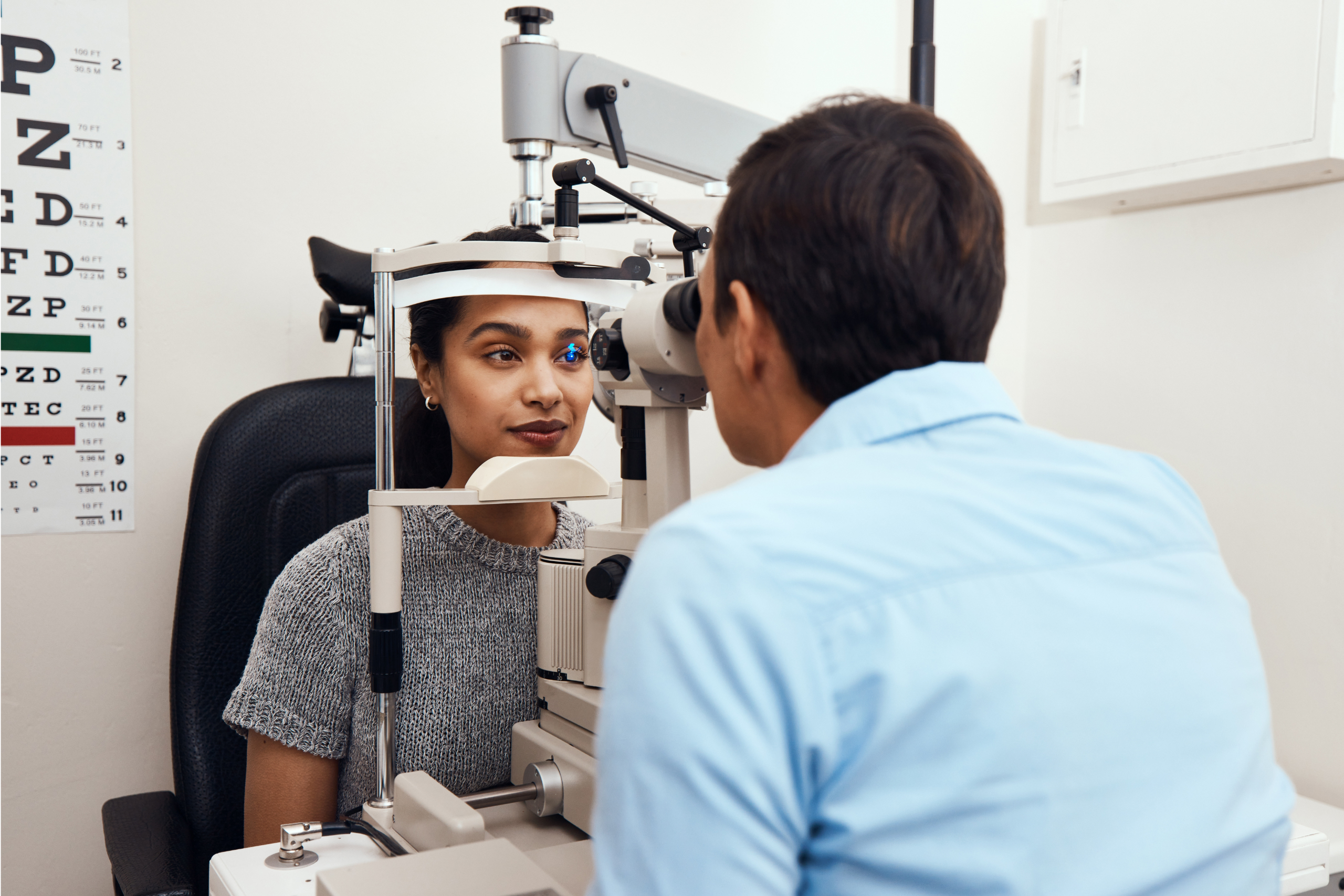Diabetes often develops without warning signs. According to the CDC, more than 38 million people in the U.S. live with diabetes, and many do not even know they have it. That is why it is important to know the basics, especially the differences between prediabetes, type 1 diabetes, and type 2 diabetes.
What Is Diabetes
Diabetes is a health condition where your body has trouble managing blood sugar. It can happen when your body does not make enough insulin or cannot use insulin the right way. Over time, too much sugar in the blood can cause serious problems, including heart disease, vision loss, and kidney damage.
There are three main types: prediabetes, type 1 diabetes, and type 2 diabetes.
Prediabetes
Prediabetes happens when blood sugar levels rise above normal but are still below the diabetes range. It does not usually cause symptoms, so many people do not know they have it. The good news is that you can take steps to turn things around.
According to the CDC, over 98 million adults in the U.S. have prediabetes. That is about 1 in 3 adults. Most do not know they have it.
Even with prediabetes, you may start noticing the following symptoms:
- Feeling more tired than usual
- Being thirstier
- Using the bathroom more often
The best way to stop prediabetes from turning into type 2 diabetes is to make small lifestyle changes.
Maryland’s HealthChoice Diabetes Prevention Program (DPP) is a free, year-long program for eligible Medicaid members. It includes weekly or monthly sessions with a trained coach, group support, and tips for eating healthier, staying active, and managing stress.
People in the program often lose 5–7% of their body weight and feel more energetic. Research shows that DPP can lower your risk of getting type 2 diabetes by up to 58%, and even more if you are over 60.
Type 1 Diabetes
Type 1 diabetes develops when your body no longer produces insulin. It often appears in children or young adults, but can start at any age. This form progresses quickly and requires daily insulin and regular blood sugar checks to stay healthy.
Common diabetes symptoms include:
- Losing weight without trying
- Feeling very tired or sick
- Needing to urinate more often
- Feeling thirsty all the time
- Blurred vision
If you notice these signs, get tested right away. People with type 1 diabetes need daily insulin, blood sugar checks, and ongoing care from a provider.
Type 2 Diabetes
Type 2 diabetes is the most common form and usually develops gradually. Your body still produces insulin, but has trouble using it effectively. Because symptoms can be mild or absent early on, many people live with it for years without knowing.
Anyone can develop type 2 diabetes, but the chances go up if you are over 45, carry extra weight, or have close family members who have been diagnosed with diabetes.
Signs to look for:
- Fatigue
- Increased thirst
- Frequent urination
- Slow-healing cuts
- Blurry vision
Eating well, being active, and taking medicine if needed can help manage type 2 diabetes and avoid complications.
How Jai Medical Systems Supports You
At Jai Medical Systems, we are here to help support you in your health journey in a variety of ways. If you qualify, you can join the HealthChoice Diabetes Prevention Program at no cost. We also offer health education classes to help you make informed decisions about your care.
Topics include diabetes care and management, weight management, asthma, smoking cessation, and hypertension. Classes are available both online and in person, and transportation may be provided if you need it.
If you are ready to make a healthy change, call 1-888-JAI-1999 or talk to your provider to learn more about how to join.
If you have Medicaid in Maryland, you probably get your care through a Managed Care Organization (MCO). An MCO helps you stay healthy by ensuring access to primary care and specialty care doctors, hospitals, medicine, and more, so you get the care you need, when you need it.
In Maryland, Medicaid health plans are called Maryland MCOs. When you sign up for Medicaid, you pick a plan from a list of approved options. Each plan is a Maryland Managed Care Organization that works with providers in your area. That plan becomes your go-to for accessing care.
Let us walk you through how it works and how you can use your MCO benefits to feel your best.
What Do Maryland Managed Care Organization Plans Cover?
Your Medicaid Managed Care Organization benefits include a wide range of care at no cost to you such as:
- Visits to your primary doctor
- Visits to specialists (like heart or skin doctors)
- Emergency room care when you are sick or hurt
- Lab tests, X-rays, and prescriptions
- Checkups for babies, kids, and teens (EPSDT)
- Prenatal care during pregnancy and help after birth
- Immunizations (shots)
- Family planning
- Vision care
Some services, like dental care or mental health, are handled by the state or other programs, but MCOs can help guide you to the right place for these services.
Tips to Use Your MCO Benefits
Here are easy ways to take full advantage of your MCO Medicaid benefits:
Book Regular Checkups
Even if you feel fine, checkups help catch problems early. Children should get well visits, lead tests, and shots on a regular schedule. Adults should get annual physicals and screenings, too.
Get Your Vaccines
Ask your doctor about important vaccines to protect you and your family from serious illnesses.
Choose a Doctor in Your Network
Use your plan’s provider list to find a doctor who works with your Maryland MCO. This helps you avoid surprise bills.
Use Free Transportation, If Needed
If you don’t have a ride, call your local health department to ask about Non-Emergency Medical Transportation (NEMT). If you qualify, you can get a free ride to your covered appointments. Jai Medical Systems also offers free transportation to and from your primary care appointments.
Keep Using Your Benefits if You Switch Plans
If you change your MCO, you may be able to keep your current treatment or medicine for up to 90 days. Let your new plan know right away so care does not stop.
Why Pick Jai Medical Systems?
At Jai Medical Systems, we have served Maryland families since 1997. We know your community. We know your needs. And we are here to help you get the most from your MCO benefits.
Here is why so many Marylanders choose us:
- Jai Medical Systems has earned Medicaid Health Plan Accreditation from the National Committee for Quality Assurance (NCQA). Currently, our plan is rated a 4 out of 5 by NCQA. In addition, we have earned Health Equity Accreditation from NCQA.
- We have a comprehensive provider network.
- We offer a Healthy Rewards Program to reward you for taking care of important preventative healthcare.
- We offer free health education classes and online resources to help manage your care.
- We have a 24/7 Nurse Advice Line when you have health questions.
- We work closely with you to help you stay healthy year-round.
If you are a member of Jai Medical Systems, we can help you find a provider, make an appointment, or learn about your benefits. Call our friendly and knowledgeable Customer Service team today at 1-888-524-1999. Not a member, but want to learn more about Jai Medical Systems? Call us at 1-888-JAI-1999.
Eye exams are not only for vision correction. During your visit to an optometrist or ophthalmologist, the internal structures of your eyes will be examined to check for eye defects and signs of diseases affecting other parts of the body.
Catching these issues early can help protect your eyesight and ensure good overall health.
What Diseases Can Be Detected in Eye Exams
Your eyes contain tissues, nerves, and blood vessels, which can reveal early signs of health problems throughout the body. An eye exam allows doctors to detect indicators linked to conditions such as the following.
Diabetes
High blood sugar can damage the small blood vessels in the retina, causing bleeding, swelling in the central retina, and cataracts. In fact, many people learn they have diabetes when their eye doctor notices these changes during an exam.
Regular eye exams are especially important for diabetics, as the disease can cause diabetic retinopathy, a condition that can lead to blindness if not managed. One of the most common tests is retinal imaging, which provides detailed digital images of the surface of the retina. Retinal imaging exams are now offered at Jai Medical Systems’ participating provider, Jai Medical Center.
Hypertension
High blood pressure is a highly prevalent disease in the country, affecting about half of the adult population. The condition can affect your eyes, causing problems like thinning blood vessels, tiny spots of bleeding, and swelling of the optic nerve. Since these changes often appear before other symptoms develop, eye doctors are sometimes the first to detect high blood pressure.
Cardiovascular Disease
Conditions like heart disease can leave warning signs such as blocked blood vessels, tiny cholesterol deposits in the eye arteries, and yellowish deposits in the cornea.
Certain Cancers
Although formal cancer screening requires specialized tests, eye exams can reveal signs of certain types of cancers. Leukemia, for example, may present as retinal bleeding or swelling of the optic nerve. Other cancers, such as melanoma, lung cancer, breast cancer, and multiple myeloma, may trigger changes such as abnormal pigmentation or unusual growths that an eye doctor may detect during an exam.
Glaucoma
Being an eye disease, glaucoma can be easily detected during an eye exam. As glaucoma develops, it causes significant changes in the structure of the eye. These include thinning tissues around the optical nerve, blind spots in peripheral vision, and an increase in fluid pressure inside the eyes.
Cataracts
If you have cataracts, your doctor may see the signs during a microscopic exam. Symptoms often include cloudy or yellow areas in the lens of the eye, hardening of the central part of the lens, and absence of the normal red glow that comes from the retina when you shine light on it.
Macular Degeneration
This is arguably one of the most common causes of vision loss among the elderly. It primarily affects the macula, which is a small, central part of the retina responsible for sharp vision. The condition causes blurry or distorted central vision, while peripheral vision usually remains intact. An eye exam can detect signs like yellow deposits under the retina, thinning of macular tissue, and the presence of fluid or swelling in the macula.
How Often Should You Get an Eye Exam?
The American Optometric Association (AOA) recommends yearly eye exams for all adults, even those without eye problems. This helps detect vision issues and underlying health conditions such as diabetes, hypertension, or high cholesterol. Early detection through regular eye exams makes it possible to begin treatment right away, helping to protect your vision and prevent more serious health problems down the road.
At Jai Medical Systems, we are committed to providing high-quality healthcare benefits and services to the people of Maryland, including annual eye exams. Contact us today to find a provider and schedule your annual eye exam.
August is Immunization Awareness Month, a perfect time to prepare your child for the new school year. Along with getting school supplies and clothes, making sure your child’s shots are up to date is one of the most important steps you can take. These shots protect your child’s health and help keep classmates and teachers safe.
When children spend hours together in classrooms, it is easier for sickness to spread. When you get your child the right shots, you lower the chance of illness and help protect others around them.
Why Immunizations Are Important
Getting shots on time has lasting benefits for your child and the whole community. They protect against sickness, lower the chance of outbreaks, and meet school rules for attendance.
Disease Prevention
Shots protect against serious illnesses like measles, mumps, chickenpox, polio, and whooping cough. These sicknesses can cause long absences from school and lasting health problems. Keeping up with shots gives your child a strong defense.
Preventing Outbreaks
When many children get their shots, it is harder for sickness to spread. If too many skip their shots, outbreaks can happen quickly in schools. Learning about how vaccines work and the benefits they provide is key to making informed decisions. By staying informed and keeping vaccination rates high, we can protect not only individual children but also the health of those around them.
Comply With School Requirements
In Maryland, children must have certain shots before starting school. This includes protection against the following illnesses:
- Measles
- Mumps
- Rubella
- Polio
- Tetanus
- Diphtheria
- Whooping cough
Schools often ask for an up-to-date shot record before the first day of class. Having this ready helps your child start the year without delay.
What You Can Do
Getting ready for school includes checking that your child’s shots are current. The following simple steps can make the process smooth and stress-free.
Check Your Child’s Vaccination Record
Look at your child’s shot record before the school year begins. Compare it to the Maryland EPSDT immunization schedule for your child’s age. If you do not have the record, call your child’s doctor or clinic. This helps you know if your child needs any shots.
Schedule a Well-Child Visit
A well-child visit is a good time to catch up on missing shots. The provider can also check your child’s growth and answer questions. If your child needs more than one shot, the provider can plan the best way to give them with the least stress.
Help Your Child Feel Comfortable
Shots can cause worry for some children, but a little preparation can make a big difference. Talk to them in a calm voice and explain that the shot might feel like a quick pinch. Bring a favorite toy or blanket for comfort. Praise them afterward for being brave. If they feel sore later, a cool cloth can help.
Reach Out for Support
You do not have to handle back-to-school health steps alone. If you are a member of Jai Medical Systems, we can help you find a provider, make an appointment, and assist with transportation to and from your child’s primary care apppointment. Call us at 1-888-JAI-1999 if you need help getting your child school-ready. We are here to make the process easier for you and your family.
Good health is not just about doctor visits or taking medicine. Where you live, work, and spend time can play a big part in how healthy you feel each day. These life factors are called social determinants of health. They include your job, your neighborhood, your school, and the people around you.
What Are the Social Determinants of Health?
Your daily life shapes your health in many ways. Below are some of the social factors that influence health.
Economic Stability
A steady job and enough money make it easier to pay for food, housing, and doctor visits. Without money, people might skip meals or avoid medical care. Research shows that living in poverty or close to it (below 200% of the federal poverty level) can lower life expectancy by about eight years compared to people with higher incomes.
Education Access and Quality
Education gives you the tools to make healthy choices and find better jobs. Kids who go to good schools and finish high school are more likely to stay healthy as adults. People with more education often live longer and feel better because they understand how to take care of their health.
Healthcare Access and Quality
Having a trusted doctor and being able to get check-ups can help detect health issues before they become serious. According to the CDC, inadequate healthcare is a main reason for higher rates of heart disease and other long-term illnesses.
Neighborhood and Built Environment
Your neighborhood shapes how easy it is to move your body and eat healthy foods. Safe parks and sidewalks make it easier to walk or exercise outside, while stores with fresh fruits and vegetables help you cook healthy meals at home.
Living in an area without safe places to play can make people feel worried about crime or traffic, so they stay inside more and feel trapped. Not having good grocery stores nearby forces families to eat more processed foods and can cause stress about how to find healthy options.
Social and Community Context
Strong connections with family and friends can help you handle stress and stay motivated to care for your health. Feeling supported can lower your risk of depression and help you live longer. A caring community makes it easier to stay on track with your health goals.
Reasons to Address Social Determinants of Health
The following are some of the reasons why supporting these areas of your life can help you stay healthy and feel your best.
- Improve overall health: Meeting your basic needs helps you feel strong and lowers your chances of getting sick.
- Improve mental health: Feeling safe, having enough food, and having people you trust can keep your mind calm and happy.
- Reduce the risk of chronic diseases: Good food choices and safe places to move lower your chances of getting serious diseases like heart problems or diabetes.
- Better management of existing conditions: When your daily needs are met, it is easier to take your medicine, get to appointments, and follow care plans.
- Reduce healthcare costs: Staying healthy can help you avoid emergency visits and save money on medical bills.
- Increase life expectancy: Meeting your social needs can help you live a longer and fuller life.
What Is a Social Determinants of Health Screening Tool?
Doctors and health groups use social determinants of health screening tools to learn about things that might be making it harder for you to stay healthy.
At Jai Medical Systems, we have a simple survey that asks about your needs with food, housing, and transportation. Your answers help us connect you to helpful local programs, like food support or ride services.
If you want help with any of these areas, reach out to us today. We are here to support you and help you live your healthiest life.
You might feel fine, but small steps each day can help you stay healthy for years to come. Healthy living involves building good habits you can stick with. When you take care of your body, you feel stronger, sleep better, and avoid many common health problems.
Why Healthy Habits Matter
When you stick to healthy living habits, you give your body the tools it needs to fight sickness. People who eat well, stay active, and go to the doctor on time are less likely to get serious health issues like diabetes, heart issues, or high blood pressure. These good habits also help lower stress, boost mood, and save money by avoiding long hospital visits or extra medicine.
Even one healthy habit can make a big change. According to the NHS, people who eat five fruits and vegetables each day can lower their chances of early death.
Tip #1: Try Simple Healthy Eating Swaps
Eating well does not mean you have to give up your favorite meals. You can start small and still make a big difference. Try these easy food swaps:
- Pick brown rice instead of white
- Eat whole wheat bread over white bread
- Add one fruit or veggie to every meal
- Drink water or tea instead of soda or sugary drinks
Healthy eating helps your body stay strong, gives you energy, and can even improve your sleep. Remember, you do not have to change your whole diet overnight. Start with one change and build from there.
Tip #2: Visit Your Doctor Regularly
Even if you feel okay, it is still important to see your doctor at least once a year. Your doctor will check your blood pressure, talk with you about your health, and help you stay up to date with vaccines. Catching problems early makes them easier to treat. These visits can also help you manage medicine or health conditions.
Tip #3: Get Moving Every Day
Moving your body each day is one of the best things you can do for your health. You do not need a gym or fancy equipment. Walking, stretching, dancing, and even cleaning the house all count. Aim for 30 minutes a day of movement.
Tip #4: Start Small and Keep Going
One reason people stop healthy habits is that they try to change too much at once. Instead, start small. Here is one idea:
- Week 1: Walk 10 minutes each morning
- Week 2: Add a glass of water before lunch
- Week 3: Swap a snack for a piece of fruit
Track your progress on paper or in a notebook. If you miss a day, just start again the next day. Building habits takes time, but every small step counts.
Tip #5: Get Rewarded for Taking Care of Yourself
Did you know that Jai Medical Systems gives you a $25 Target Gift Card just for going to your yearly checkup? It is part of the Healthy Rewards Program, and all members are automatically included. Here’s how to claim it:
- Visit your doctor for a checkup in 2025
- Fill out and send in the Healthy Rewards Form, or complete it online!
Keep Moving Toward a Healthier You
Starting healthy habits can feel hard at first, but small steps make a big difference. You can eat better, move more, and visit your doctor to stay ahead of health problems. With support from your doctor and help from Jai Medical Systems, healthy living becomes easier and more rewarding.
Call us at 1-888-JAI-1999 or visit Jai Medical Systems to learn more about your benefits and how to earn your Healthy Rewards today.
Your body and your mind work together. When one feels off, the other often does, too. That is why caring for your mental health is just as important as eating right or going to the doctor.
If you feel sad, worried, or stressed all the time, it does more than affect your mood. It can also hurt your body in ways you might not notice right away.
Ways Mental Health Directly Affects Physical Health
Feeling down for a long time can make your body tired. You might have trouble sleeping, get more headaches, or feel sick to your stomach. These signs are your body’s way of saying something is not right.
Studies show that people with depression are more likely to get sick with things like heart problems, diabetes, and asthma. In fact, 50% to 80% of people with mental health conditions also have sleep problems, compared to only 10% to 18% of the general population.
Poor mental health can also make it harder to fight off illness. When your brain feels low, it can slow down your immune system, the part of your body that keeps you healthy.
Indirect Connections Between Mental and Physical
Your actions matter, too. When you feel stressed or sad, you may stop taking care of yourself. You might skip meals, sleep less, or stop being active. These habits can lead to more health problems.
Some people try to feel better by smoking or drinking. While it may seem like a quick fix, these habits make things worse over time. Studies show that people with depression or anxiety are twice as likely to smoke. That puts more strain on your heart and lungs.
Being alone too much is another issue. Loneliness can make you feel down, and it can also raise your risk of getting sick.
Mental Health Screenings and More—Manage and Monitor These Issues
The good news is, there are simple ways to feel better and stay healthy. Small changes every day can make a big difference.
Try to move your body. You do not need a gym. A short walk around the block or dancing in your living room helps your brain feel good. Exercise helps your body, too. It boosts your energy, lifts your mood, and lowers your risk of getting sick.
Eat fresh food when you can. Fruits, vegetables, and whole grains help both your mind and body. Try to cut back on sugary snacks or fried foods when possible.
Sleep matters, too. Aim for 7 to 9 hours each night. When you sleep well, you think better and feel stronger.
You can also talk to your doctor about a mental health screening. This is a simple check-up for your mind. Your primary care provider can ask you a few questions to see how you are feeling. If something seems off, they can help you find support. Getting help early can stop small problems from turning into big ones.
It’s Okay to Ask for Help—Here’s How
You do not have to feel bad to ask for help. If your thoughts or feelings are getting in the way of daily life, it is time to act. Every part of your health matters.
If you are covered by Medicaid and live in Baltimore, Jai Medical Systems can help you find a doctor who offers mental health screening and other support services. Contact us today to get started. Your body and mind deserve care, and you deserve to feel your best.
You might feel fine, but your body could be hiding a problem. A yearly physical gives your doctor a chance to check your whole body, even before you feel sick. These visits can help catch small issues before they turn into big ones. In many cases, a simple annual check-up can even save your life.
Getting your annual physical is one of the best things you can do to stay healthy and avoid surprise health problems.
1. An Annual Physical Finds Problems Early
A yearly physical helps your doctor find health problems early before they get serious. For example, high blood pressure might not cause pain, but it can lead to a heart attack or stroke.
A quick blood pressure check during your visit can catch it early. The same is true for diabetes, cancer, or heart disease. Catching these problems early means easier treatment and a better chance of staying healthy.
2. An Annual Physical Gives You Important Screenings
During your annual physical, your doctor may give you tests called screenings. These include checking your blood, your weight, and your blood pressure. Depending on your age, your doctor may also suggest tests for breast cancer, cervical cancer, prostate cancer, or colon cancer.
These screenings are done to help find diseases early, even if you feel okay. For women, pap smears or mammograms are common. For men, it might include a prostate check or blood test. These tests are quick, and they give your doctor important clues about your health.
3. An Annual Physical Helps You Stay Up to Date on Vaccines
Vaccines help protect you from diseases that can make you very sick. At your annual check-up, your doctor will look at your vaccine history. You might get a flu shot, COVID-19 booster or Tdap
If you are over 50, your doctor may offer vaccines for shingles or pneumonia. If you have diabetes or another health condition, you may need extra protection with the hepatitis B shot.
4. An Annual Physical Keeps Track of Changes in Your Health
Even small changes in your weight, blood sugar, or blood pressure can make a big difference. That is why your yearly physical is so helpful. Your doctor will look at how your health has changed since your last visit.
This is your time to talk about any new pain, questions, or changes. Maybe you started a new medicine or had a new symptom. Your doctor can help you figure out what it means and what to do next.
5. An Annual Physical Helps Build a Strong Relationship With Your Doctor
A good relationship with your doctor makes it easier to talk about your health. During a yearly physical, you get more time to ask questions and share your concerns. Your doctor gets to know you better, too. That way, if something changes later, they have a full picture of your health.
You can talk about your sleep, mood, diet, or anything else that is on your mind. This visit is for you, not just for your test results.
Take Charge of Your Health Today
A yearly physical is one of the simplest ways to stay healthy. It gives you a fresh start each year. If you have not had your annual check-up yet, now is the time to schedule it.
At Jai Medical Systems, we care about your health. We are here to help you get the care you need, when you need it. If you have questions about your coverage or need help finding a doctor, please contact us today at 1-888-524-1999.
Doctors use a mammogram to check for problems in your breasts. They can find out if you have breast cancer. That is why it is so important to have a mammogram done every other year if you’re over 40 years old. Mammograms help doctors find problems so treatment can start and improve your chances of getting better.
According to the American Cancer Society, over 300,000 women will get breast cancer this year. Breast cancer is the most common type of cancer women get. That’s why it is so important to have a mammogram. If doctors find cancer, they can start treating it right away.
Types of Mammograms
There are different types of mammograms, which are listed below:
- Screening Mammograms: This is a routine check when you have no signs of breast cancer.
- Diagnostic Mammograms: These are performed if something shows up in the screening mammogram.
- 3D Mammograms: This is used for dense breast tissue because it can help doctors see through the tissue more easily.
The First Mammogram
If you have never had a mammogram before, don’t worry! The test is easy and usually takes between 10–20 minutes. Don’t wear lotion, deodorant, or perfume on the day of the test because it can mess up the pictures.
Here’s what to expect during your mammogram:
- Getting Ready: You will need to undress and put on a special gown.
- Getting Into Position: A technician will gently position both of your breasts between two plates on the mammogram machine.
- Compression: The machine will press down gently on your breasts to get clear pictures.
- Imaging: The technician will take several pictures from different angles.
- Duration: From start to finish, it shouldn’t take more than 20 minutes.
- Discomfort: Some patients have mild discomfort, but you can ask the technician if it’s too much, and they can adjust the machine.
Important Things to Know About Breast Cancer Detection
You can do a few things to spot cancer early. Get regular screenings from your doctor, do self-exams, and talk to your doctor if you have questions.
Here are some tips:
- Regular Screenings: Schedule your check-ups and mammograms with your doctor. It’s a good idea to talk to your doctor about changes in your breasts.
- Breast Self-Awareness: Get to know how your breasts look and feel. Check for lumps, changes in size, or skin changes. Do this every month and be sure to let your doctor know if you find something unusual.
- Other Factors to Consider: Eating healthy, exercising, avoiding smoking, and limiting alcohol can all help to lower your risk of getting breast cancer.
You need to see a doctor and have a mammogram, particularly if you’ve never had one and you’re over the age of 40. If you want to know more about breast cancer screenings, please reach out to us today at 1-888-524-1999.
Do you know what your blood pressure is? Most people don’t. Why is it important? If your blood pressure is high, it might mean something is wrong and needs treatment. While many people don’t think about their blood pressure until it becomes a problem, it’s important to monitor it, especially if your family has a history of high blood pressure. If it isn’t treated, it can lead to hypertension, heart attack, and heart failure.
The Most Common Signs
- Headaches: If you experience headaches, especially after physical activity, you could have high blood pressure.
- Shortness of breath: If you are short of breath after walking short distances, it could indicate you have an issue with your blood pressure.
- Dizziness: Being lightheaded and dizzy when standing up or climbing stairs can be another indicator.
- Blurred vision: If your vision seems blurred or you are seeing double, it could be another sign you have high blood pressure.
- Heart racing: If your heart rate begins to beat very fast for no reason, it could be another sign that you should check your blood pressure.
Patients with high blood pressure have also experienced vomiting, nosebleeds, and numbness. If you have experienced any of the symptoms listed above, it’s vital to visit your Primary Care Provider and check your blood pressure.
Treatment Options
You have a lot of options available for treatment. The three biggest options are listed below:
- Lifestyle changes
-
-
- Exercise regularly
- Eat a low-salt diet
- Stop smoking
- Lower caffeine in your diet
- Lower the amount of alcohol you drink
- Maintain a healthy weight
-
- Stress Management
-
- Use relaxation techniques like meditation
- Talk to a counselor
- Use anger-management methods
- Get massages regularly
- Medication:
- Beta blockers widen blood vessels and help the heart not work so hard
- Water pills help the body get rid of high salt levels and excess water
- Alpha blockers help relax blood vessels to help blood flow
Your Primary Care Provider will choose the appropriate medication for you according to American Medical Association guidelines.
Why Is It Important to See Your Primary Care Provider Regularly?
It is important to have your blood pressure checked regularly. You could have high blood pressure and not know it. Unfortunately, it doesn’t always have symptoms. This means it could be damaging your kidneys, heart, and even your brain without you even knowing it. When it isn’t properly treated, high blood pressure can cause heart disease and stroke.
Visit Your Primary Care Provider
The only way to be sure you don’t have high blood pressure is to have it checked. See your Primary Care Provider so they can check and offer treatment options to help you maintain a healthy blood pressure.
If you don’t have a Primary Care Provider or need help getting Medicaid coverage so you can see one, reach out to us today. At Jai Medical Systems, we are always here to help you with your medical benefits.
 Did you know that your IE browser is outdated?
Did you know that your IE browser is outdated?











